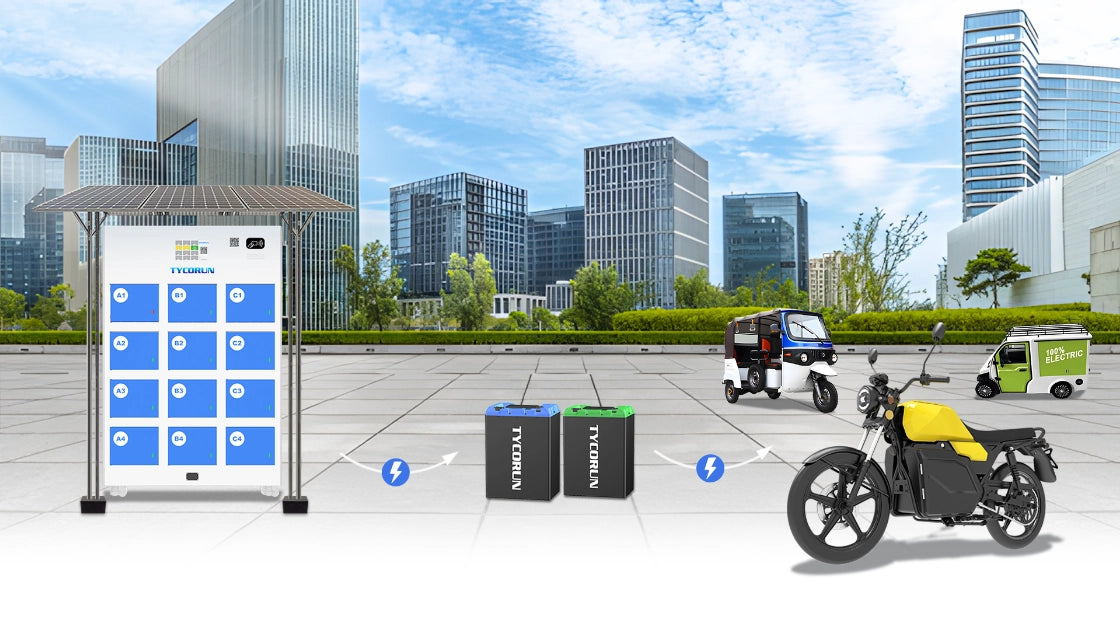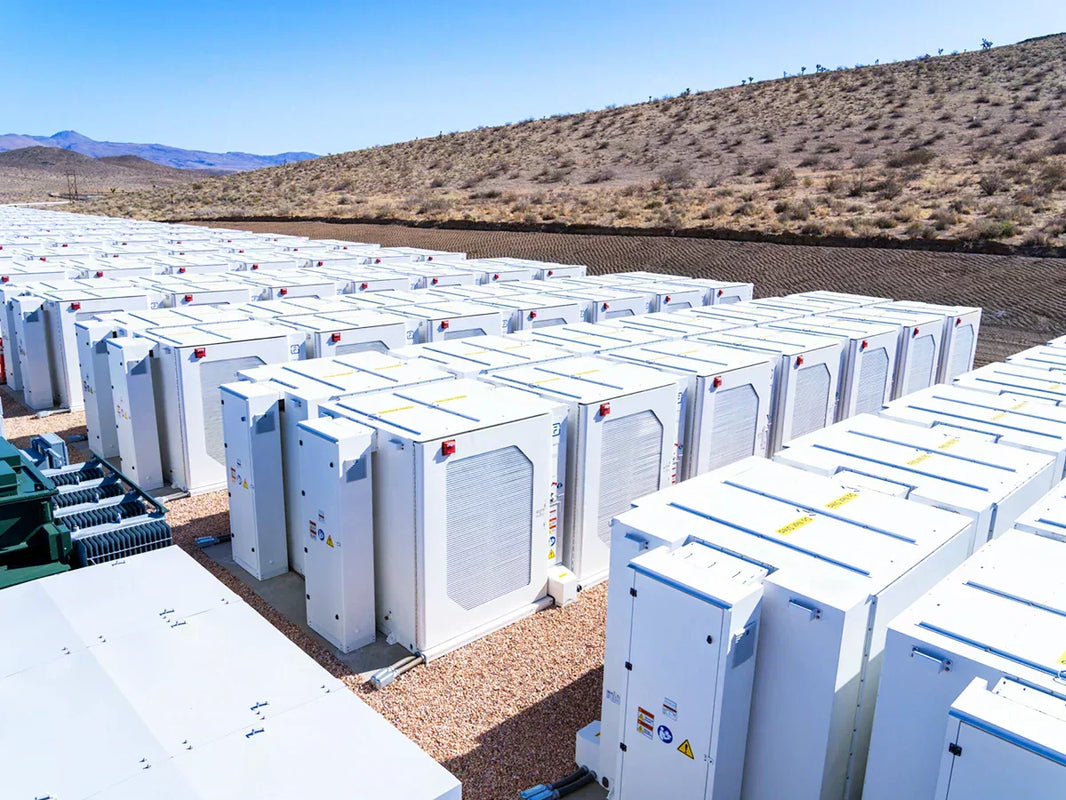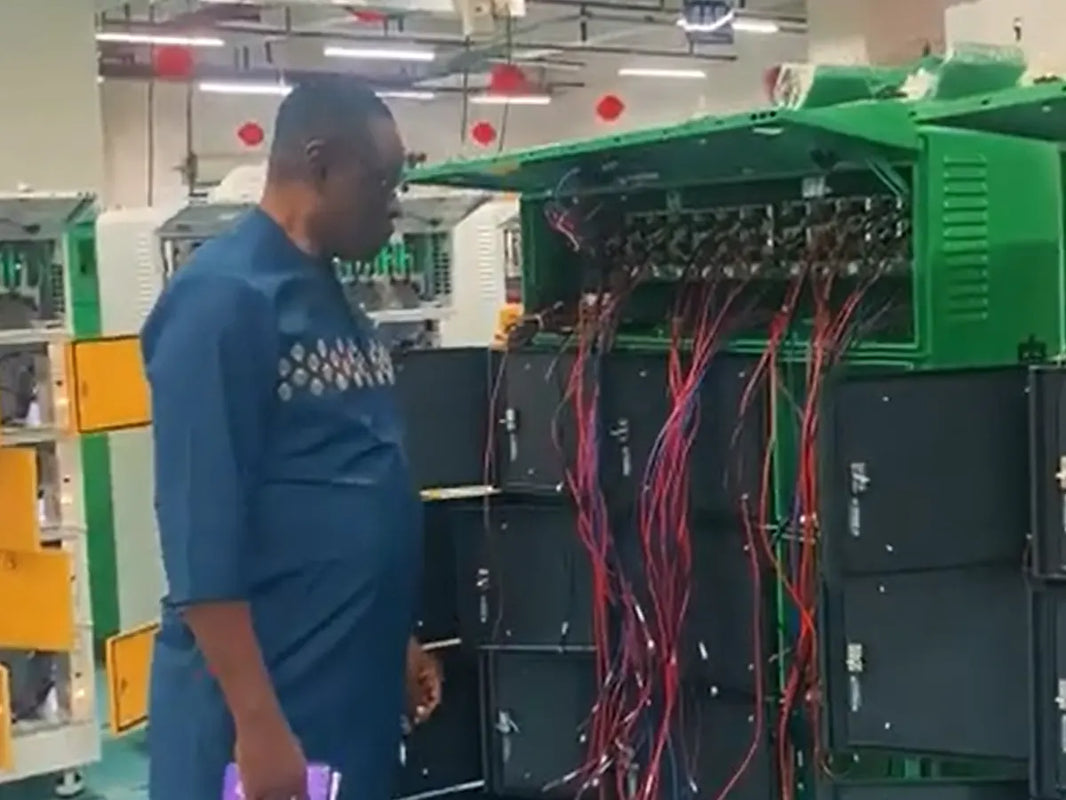
Main content:
- Regional Market Dynamics
- Energy Storage: Balancing Supply and Demand
- Energy Storage Industry Has Entered a Phase Of Rapid Development Since 2020
- Energy Storage Technologies Are Developing In a Diversified Manner
- Development Background
-
Industry Status
- Energy Storage Installations Continue to Grow Rapidly; Demand Growth Trends Strong in 2024
- Declining Energy Storage Costs Have Boosted Economic Viability
- Policies Promote Increased Allocation Ratios and Durations of Energy Storage
- Commercial Model For Energy Storage Distribution Is Expected to Improve
- Conclusion
To achieve net-zero emissions for the global energy system by 2050, global wind and solar power capacity will increase 14-fold, driving energy storage demand to over 4000 GW
From the perspective of global energy structure transformation, the growth in energy storage demand is the result of increased renewable energy penetration, restructuring of traditional energy systems, and regional energy security competition. The US, China, and Europe dominate the global energy storage market, while emerging markets have significant development potential. Global new energy storage capacity is expected to continue to grow from 2025 to 2027.
Regional Market Dynamics
- China: Low residential adoption, strong growth potential.
- US: Policy-driven rush, long-term demand resilient.
- Europe: Rising new installations, large-scale storage emerging.
- Emerging Markets: Late start, broad future potential.
- New Fields: AI-driven data centers increase storage demand.
Energy Storage: Balancing Supply and Demand

Achieving Diverse Functions to Address Power Supply and Demand Mismatches
Energy storage is a device that solves the spatial and temporal mismatch between power supply and demand. Energy storage, or energy storage, refers to the process of storing temporarily unused energy through specific technologies and devices, and releasing it for use when needed. Energy storage can resolve the spatial and temporal contradictions between power supply and demand, improving the stability, economy, and sustainability of energy systems. It plays a crucial role in multiple fields such as energy systems, industrial production, and daily life.
Based on actual application scenarios, energy storage is divided into residential energy storage, commercial and industrial energy storage, and large-scale energy storage (large-scale storage, utility-grade energy storage). The functions achieved by energy storage in these three scenarios differ.
Residential Energy Storage: Refers to energy storage systems installed in residential homes, used to store electricity generated by solar panels or other renewable energy power generation equipment for use at night or on cloudy days, and can also serve as a backup power source in case of power outages.
Application scenarios include household daily electricity consumption, distributed photovoltaic (PV) system support, and off-grid power supply. Industrial and Commercial Energy Storage: Energy storage solutions for non-residential users such as enterprises, factories, and shopping malls, aiming to optimize electricity costs, improve power supply reliability, and participate in grid services such as frequency regulation and peak shaving. Application scenarios include manufacturing industries, data centers, hospitals, shopping malls, and other locations with high requirements for power quality and supply reliability.
Large-Scale Energy Storage: Large-scale energy storage projects serving the grid side or power source side, used for power peak shaving, frequency regulation, backup power, and renewable energy grid connection support. Application scenarios include grid peak and valley shaving, renewable energy grid connection, cross-regional power dispatch, and emergency backup power.
Main functions of energy storage: Balancing the power system, peak shaving and valley filling; promoting the development of renewable energy and improving renewable energy absorption capacity; serving as a backup power source to ensure power supply reliability; providing ancillary services, such as frequency regulation; optimizing user energy consumption, such as peak-valley price arbitrage; delaying investment upgrades and replacing transmission and distribution upgrades. With the booming development of new energy, especially photovoltaics, one of the most important downstream application scenarios for energy storage is photovoltaic power distribution and storage, to improve renewable energy absorption capacity.
Energy Storage Industry Has Entered a Phase Of Rapid Development Since 2020

The development of energy storage is a history of innovation in humanity's continuous search for more efficient and flexible energy utilization methods. It has evolved from mechanical energy storage to electrochemical energy storage, and then to a coexistence of multiple technologies. The development of energy storage can be mainly divided into four periods: Early period: the emergence of pumped hydro storage and the invention of lead-acid batteries. Mid-20th century to late 20th century: research and progress in various battery technologies, and the proposal of lithium-ion batteries.
Early 21st century to 2020: rapid decline in the cost of lithium-ion batteries and early exploration of commercialization. 2020 to present: driven by cost reduction in the industrial chain and the "dual carbon" goal, energy storage has entered a phase of rapid development. Currently, more than 120 countries worldwide, including China, have proposed the goal of "carbon neutrality," and the development of renewable energy is an important measure.
With the formulation and implementation of net-zero emission targets in various countries, the installed capacity of new energy sources, such as photovoltaics and wind power, in power systems has further increased. However, the resulting volatility, intermittency, and rotational inertia pose significant challenges to the power grid. Energy storage is a crucial infrastructure supporting the large-scale application of new energy sources, playing a vital role in mitigating the impact on the power system and maintaining its reliability and stability.
In recent years, new energy storage technologies, represented by electrochemical energy storage, have experienced rapid growth. The core driving factors are as follows: the rapid decline in the cost of lithium-ion battery energy storage, significantly improving its technical and economic viability; the continuous increase in the global share of renewable energy, requiring energy storage at the grid level to improve absorption and grid stability
The demand for self-consumption of electricity driving the rapid growth of the residential energy storage market; the continuous advancement of electricity marketization and the energy internet supporting the development of the energy storage industry; and policy support creating favorable market opportunities for energy storage development.
Home energy storage has grown rapidly alongside industrial trends, driven by declining battery costs, renewable energy adoption, supportive policies, and rising consumer demand for self-consumption and grid flexibility.
Energy Storage Technologies Are Developing In a Diversified Manner

Based on the different storage media, energy storage technologies can be divided into five categories: mechanical energy storage, electrochemical energy storage, chemical energy storage, electromagnetic energy storage, and thermal energy storage. Apart from pumped hydro storage (a type of mechanical energy storage), all other energy storage technologies are considered novel energy storage systems.
Compared to traditional pumped hydro storage, novel energy storage offers multiple advantages, including shorter construction cycles, more flexible site selection, faster response times, and stronger regulation capabilities, providing the power system with multi-timescale, end-to-end control capabilities. From an industrialization perspective, pumped hydro storage, as the most traditional energy storage technology, has the highest commercial maturity.
Lithium-ion batteries, molten salt energy storage, compressed air, and vanadium redox flow batteries, with their higher technological maturity compared to other novel energy storage technologies, have also entered the commercialization stage first. In addition, flywheel energy storage, hydrogen energy storage, and supercapacitors are still maturing and are currently in the demonstration application or research and development stage.
Lithium-ion energy storage batteries remain the mainstream, but their limitations and the growing demand for long-term energy storage are driving the accelerated commercialization of other technological paths. In 2024, lithium-ion battery energy storage, represented by lithium iron phosphate, accounted for 96% of the total installed capacity of novel energy storage and 55% of the total energy storage capacity, surpassing pumped hydro storage to become the leading energy storage technology.
However, lithium-ion batteries suffer from safety deficiencies and are not well-suited for long-term energy storage. With increasing demand for long-term, high-capacity energy storage, other new energy storage technologies such as flow batteries, compressed air energy storage, and molten salt thermal energy storage are expected to accelerate their commercial application.
Each energy storage technology has its own characteristics. In practical applications, it is necessary to comprehensively consider the characteristics of various energy storage technologies (including storage duration, energy density, power, response time, etc.) to select the most suitable technology solution.
Currently, mainland China primarily focuses on mandatory energy storage, paying more attention to initial investment costs. In the future, as the profitability model for energy storage power plants becomes more established, mainland China's energy storage power plants may focus more on LCOE.
Development Background
Commendable Profitability
Under negative electricity prices/midday off-peak electricity prices, the profitability of pure photovoltaic projects decreases, making energy storage deployment urgently needed.
Considering a pure photovoltaic project, assuming: a construction scale of 100MW, a design operating life of 25 years, a construction cost of 3 yuan/W, and 1500 operating hours per year, referencing Gansu Province's electricity price implementation mechanism (the price for guaranteed consumption is the benchmark price for coal, and the on-grid price for photovoltaic power generation from 9:00 to 17:00 cannot exceed 0.5 times the benchmark price for coal), when the photovoltaic power generation utilization rate is 90% (the photovoltaic power generation utilization rate in Gansu Province in 2024 was approximately 91.3%)
The guaranteed consumption electricity ratio is 50%/40%/30%/25%/20%/0%, the IRR of the pure photovoltaic project is 7.1%/6.2%/0%, respectively. The midday off-peak pricing (5.2%/4.8%/4.3%/2.2%) means that the profitability of photovoltaic projects decreases as the proportion of electricity traded through market mechanisms increases.
Considering the construction of an energy storage system to complement this photovoltaic power generation project: Assuming a storage duration of 2 hours, a construction cost of 1.25 yuan/Wh, one charge and one discharge per day, a charge/discharge depth of 90%, and that the peak-period electricity price for new energy in Gansu Province does not exceed 1.5 times the benchmark price for coal, then under the above conditions (photovoltaic power generation utilization rate of 90%, and guaranteed consumption electricity ratios of 50%/40%/30%/25%/20%/0%)
If the energy storage ratio is 10%, the IRR of the photovoltaic-energy storage project with energy storage will be 7.2%/6.4%/5.6%/5.1%/4.7%/2.8%, respectively, representing an increase in profitability of approximately 0.2/0.2/0.3/0.4/0.4/0.6 percentage points compared to a pure photovoltaic project. Sensitivity analysis shows that when the energy storage ratio increases to 15%/20%, the profitability of the photovoltaic-energy storage project will further improve.
Power Reliability Needs

Power Crises Under Extreme Weather and Sudden Geopolitical Events: Frequent extreme weather events and geopolitical crises worldwide, coupled with weak power grid infrastructure, frequently lead to large-scale power outages and other power shortages in some regions, urgently requiring energy storage to provide emergency power support.
For example, in 2024, Myanmar suffered severe flooding, which damaged transmission lines and submerged numerous hydroelectric and coal-fired power plants, triggering a nationwide power crisis. Similarly, Iran has been mired in a power crisis since the summer of 2024, affected by sanctions, damage to natural gas pipelines, and climate change.
Industry Status
Energy Storage Installations Continue to Grow Rapidly; Demand Growth Trends Strong in 2024
China’s energy storage installations reached a record high in 2024, with bidding accounting for 70% of growth in 2025. According to CNESA, China's newly installed energy storage capacity reached 43.7 GW/109.8 GWh in 2024, representing year-on-year growth of 103% and 136%, respectively.
Independent energy storage accounted for 99.1% of this, with large-capacity energy services, support for renewable energy grid connection, and user energy management services being the most important services across various application areas. According to incomplete statistics, my country's large-scale energy storage tenders totaled 116.0 GWh from January to December 2024, a year-on-year increase of 69.1%, with 105.6 GWh won in bids, a year-on-year increase of 75.6%, setting the tone for growth in 2025.
Declining Energy Storage Costs Have Boosted Economic Viability
The simultaneous decline in photovoltaic and energy storage prices has led to a surge in yields. In 2024, the prices of photovoltaic (PV) and energy storage systems continued to decline. As of December 11, 2024, the price of the 182-panel Topcon was only 0.71 yuan, a decrease of approximately 60% from the peak in December 2022. Considering the PV system price of 2.5 yuan/W, the residential energy storage PCS price of 0.8 yuan/W, and the residential energy storage battery price of approximately 1 yuan/Wh, with an annual PV utilization of 1200 hours, a 5kW + 10kWh PV-energy storage system, at an electricity price level above 0.5 yuan, has a payback period of less than 9 years, essentially achieving grid parity for PV and energy storage. Both module and energy storage costs decreased. Taking the Shandong market as an example, calculations show that the IRR of a 30%/2h PV-energy storage system increased from 8.8% at the end of 2023 to 12%, and shared energy storage increased from 6.8% to 22%.
Policies Promote Increased Allocation Ratios and Durations of Energy Storage
Policies at all levels have been successively issued to support increased allocation ratios of energy storage and the large-scale development of long-duration energy storage. Research reveals two major trends in China’s energy storage: First, increased energy storage ratios: In 2024, Shandong, Hebei, Henan, Jiangsu, and other regions raised their energy storage requirements. For wind and solar projects commissioned in 2025-2026, the energy storage ratio generally increased to over 15%, which helps improve the capacity to absorb surplus photovoltaic power.
Second, increased energy storage duration: According to CNESA, in 2024, 2-4 hour energy storage projects accounted for 80% of newly commissioned new energy storage projects in China. Among new projects (including those in operation, planning, and under construction), 2-4 hour projects were the most numerous, followed by 4-hour+ projects, representing a significant year-on-year increase of 45%. The duration of energy storage is expected to continue to increase in 2025.
Spot trading and capacity leasing are expected to drive spontaneous growth in energy storage. The area of spot trading is expanding. On June 17th, the Shandong electricity spot market officially commenced operation. Currently, 15 provinces nationwide are conducting spot settlement, with Shanxi, Guangdong, and Shandong in formal operation, while other provinces are in the trial or commissioning phase.
Many regions have introduced capacity compensation policies. In recent years, many regions have introduced special policies for energy storage capacity leasing, providing a "minimum" income for independent energy storage power stations through guidance prices and lease term requirements. Considering a 2-hour energy storage system, the capacity leasing guidance price in the above regions, converted to power metering, ranges from 75-400 yuan/kWh·year, with an average of 185 yuan/kWh·year.
Commercial Model For Energy Storage Distribution Is Expected to Improve
The actual utilization rate of energy storage distribution is low, with new energy energy storage distribution < independent energy storage < industrial and commercial energy storage: The National Electrochemical Energy Storage Power Station Safety Monitoring Information Platform released the "2023 Annual Statistics on the Electrochemical Energy Storage Power Station Industry," showing that in 2023, new energy energy storage distribution accounted for 8.3GW (46%), grid-side storage for 9.6GW (53%), and industrial and commercial energy storage for 0.2GW (1.2%).
In 2023, the average utilization rate index of new energy energy storage was 17%, with an annual operating time of 797 hours; the average utilization rate index of independent energy storage was 38%, with an annual operating time of 953 hours; and the utilization rate index of commercial and industrial storage was 65%, with an annual operating time of 5303 hours.
Conclusion
Energy storage adoption continues to accelerate, fueled by economic incentives, policy support, and reliability needs. Residential, commercial, and large-scale systems each serve distinct roles, while diverse technologies address various aspects of energy use. rying durations and capacities. As markets mature and profitability improves, storage will become integral to renewable integration, grid stability, and energy transition, making it a cornerstone of the future low-carbon power system.
Related articles: hydrogen energy storage, energy storage capacity, large scale energy storage
















